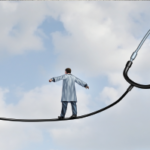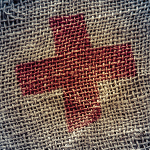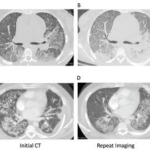Leon Wallace went on to Chicago and New York, where his published work in pulmonary hypertension in the late 1940s and early 1950s made a mark on the nascent field. After serving in the Korean War, my dad returned to Los Angeles, where he practiced cardiology and partnered with Ben Simkin at Cedars-Sinai Medical Center for 50 years. Sam Rapaport joined a no-longer-hostile USC (the Jewish quota was dropped after McKibben’s passing) and, after serving in the Air Force in 1950, became a renowned hematologist and with Don Feinstein published seminal studies on coagulation and coined the term “lupus anticoagulant.” His hematology textbook, Introduction to Hematology, was one of the few that actually read like a story. His additional discoveries included the development of the activated partial thromboplastin time, the importance of a trace of thrombin to activate factor V and VII—a description of the prothrombin activator complex—and the discovery that hemophilia A does not stem from a single genotype. He moved to UC San Diego Medical School in 1974, where he worked until his retirement in 1996. The family relationship continued when I had the privilege of working with his son, Mark, when he became chairman of the department of psychiatry at Cedars-Sinai Medical Center.
Learning from Giants
When I came to USC as a freshman medical student in 1970 and attended lectures in McKibben Hall, my father, who had not seen Rapaport in several years, insisted that I look him up. Sam greeted me as if I were one of his sons. He was thin, wiry, soft spoken, and brilliant; I was in awe in his presence. I was introduced to the “immunology” group at USC, which included Edmund Dubois, MD, and the chief of rheumatology, George Friou, MD, who wrote the first paper on antinuclear antibody. The divisions of hematology and rheumatology shared an inpatient unit that took up the entire 14th floor of the county hospital, which enabled comingling in what was probably one of the best autoimmune units in the United States.
Ed Dubois (1923–1985) graduated from Johns Hopkins Medical School and, after serving in the Army during World War II, did a medical residency under Maxwell Wintrobe, MD, PhD, (author of the hematology textbook Clinical Hematology) in Utah, and at Parkland Hospital in Dallas under Tinsley Harrison, MD, (editor of Harrison’s Principles of Internal Medicine). He came to Los Angeles to do a year of pathology in 1948 at USC and stayed because he married Nancy Kully, whose father was the principal physician for MGM studios.



